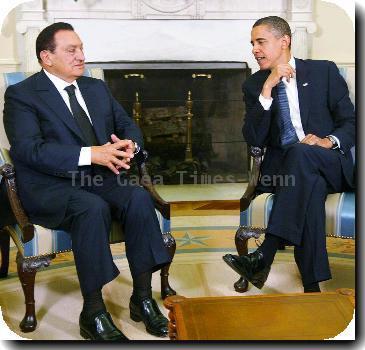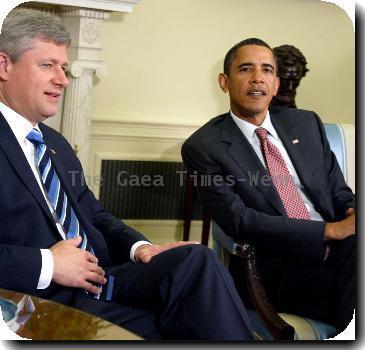Administration extends $700 billion bailout until Oct.; Dems, GOP split on best use of funds
By Martin Crutsinger, APWednesday, December 9, 2009
Administration extends $700B bailout until Oct.
WASHINGTON — The Obama administration has extended the $700 billion financial bailout program until October, setting up a struggle between Democrats who favor using some of the leftover money to help generate jobs and Republicans who say it should be used to shrink soaring budget deficits.
The administration insists the bailout fund is still needed to prevent further turmoil in the banking system. In announcing the decision Wednesday, Treasury Secretary Timothy Geithner said extending the program also will help homeowners struggling to avoid losing homes to foreclosures and small businesses having trouble getting loans.
The decision came on the same day the administration acknowledged two key bailout programs lost a total of $61 billion. The bailout of insurance giant American International Group Inc. and the lifeline thrown to struggling automakers each cost more than $30 billion, according to Treasury data disclosed in a report from the Government Accountability Office.
The administration is now projecting the losses to the government from the bailout program will be around $141 billion — $200 billion less than it estimated two months ago.
President Barack Obama said the freed-up money can help reduce the record-high federal budget deficit and “invest in job creation on Main Street rather than Wall Street.”
Obama spoke to reporters after a meeting with congressional leaders aimed at providing momentum for a new jobs program he outlined Tuesday. That effort seeks to combat the nation’s 10 percent unemployment rate by providing tax breaks to encourage companies to hire new workers, increase bank lending to small businesses and provide a fresh round of infrastructure spending.
The administration has not provided details on the size of the new spending package. But Democratic leaders suggested it could cost between $75 billion and $150 billion.
Democrats initially hoped to pass Obama’s proposals this month. But the proposals likely will slip until early January, given opposition from Republicans and the to-do list already facing Congress as it struggles to finish business before Christmas.
Both the administration and Democratic leaders have indicated they want to divert some of the unspent bailout funds to a jobs program. Their goal is to refashion a hugely unpopular program viewed by voters as a taxpayer-funded bailout for big Wall Street firms that then paid out millions of dollars in lavish bonuses.
Republicans vowed to keep trying to close down the rescue program by the end of this month. They said any leftover funds should be devoted exclusively to curbing the country’s soaring budget deficits.
“The Obama administration just can’t seem to let go of the $700 billion in ‘walking around money’ taxpayers were forced to put on the line to bailout Wall Street last year,” said Rep. Jeb Hensarling, R-Texas.
Republicans also criticized Treasury for using the Troubled Asset Relief Program as a slush fund to support programs that Congress never intended — including bailouts of automakers and failing insurance giant American International Group Inc.
“American taxpayers have had enough of open-ended bailouts that have left them stuck with trillions of dollars in new debt,” House Republican Leader John Boehner, R-Ohio, said Wednesday. “TARP should be shut down by the end of the year. It’s time to get the government out of the bailout business.”
Geithner contended that the bailout program helped avert a worse financial outcome. Financial conditions have improved, and the economy has finally pulled out of a deep tailspin and is starting to grow again.
Repayments from banks who received TARP support will soon total $116 billion, including $45 billion from Bank of America Corp.
The government expects up to $175 billion in repayments from rescued companies by the end of next year, he said.
The news follows two audits Wednesday that criticized the government’s handling of the bailout programs.
The first was from an independent panel that oversees the TARP. The panel found that the program had succeeded in averting a much worse financial crisis. But it said there had been little progress on other goals set out by Congress.
Separately, the GAO audit disclosed Treasury’s accounting for the TARP for the fiscal year that ended Sept. 30. It said the program lost $60.9 billion on programs to rescue AIG and automakers General Motors and Chrysler, but that loss was partially offset by $19.5 billion in profits on bank bailouts.
The GAO identified two “significant weaknesses” in Treasury’s accounting for bailout funds. It said Treasury did not have a good process for preparing financial disclosures, and that it did not adequately check numbers used to estimate the values of its investments in banks.
“We identified incorrect amounts and inaccurate, inconsistent and incomplete disclosures in … financial statements,” the audit says.
The TARP was passed during the height of the financial crisis in October 2008 and was scheduled to expire at the end of this year. In his notification to Congress, Geithner said it will be extended until Oct. 3, 2010, “to respond to an immediate and substantial threat to the economy stemming from financial instability.”
Geithner said the administration planned only limited use of the TARP over the next year. He expects $550 billion of the $700 billion will be spent. There was $364 billion committed in the 2009 budget year that ended on Sept. 30.
The new TARP commitments would be limited to three areas: support to avert mortgage foreclosures, boosting capital for small and community banks that are principal lenders to small businesses, and a potential increase to a joint program with the Federal Reserve designed to bolster consumer and small business lending.
Geithner said of the $141 billion in expected losses, about $25 billion should be incurred in the current budget year. “The vast majority of these potential costs” would come from efforts to prevent mortgage foreclosures.
In a report Wednesday, a TARP watchdog panel said the fund helped ease last fall’s financial panic but was less successful in meeting other goals Congress set. These include reducing foreclosures and unfreezing credit for consumers and businesses.
“Congress set goals for the TARP that went well beyond short-term financial stability, and by that measure problems remain,” said panel chair Elizabeth Warren.
The report found the program’s effects have been uneven. A $75 billion initiative to stem the wave of foreclosures has “failed,” and Treasury’s actions had granted big banks an “implicit guarantee” that the government would bail them out, Warren said.
The government still is guaranteeing billions of dollars in bank assets, which along with debt guarantees from the Federal Deposit Insurance Corp., amount to ongoing subsidies that may mask the condition of the financial markets, the report said.
Treasury responded that the TARP has “by every measure … succeeded in achieving its primary goal of economic stabilization.”
But the TARP panel, established by Congress to provide independent oversight, noted that bank failures continue and access to credit remains tight. It said the program’s progress toward goals necessary for financial stability and economic growth “is less clear.”
AP Economics Writer Jeannine Aversa contributed to this report.
Tags: Barack Obama, Christmas, Foreclosure Rates, Government Programs, Government Regulations, Industry Regulation, North America, Personnel, Real Estate, United States, Washington



